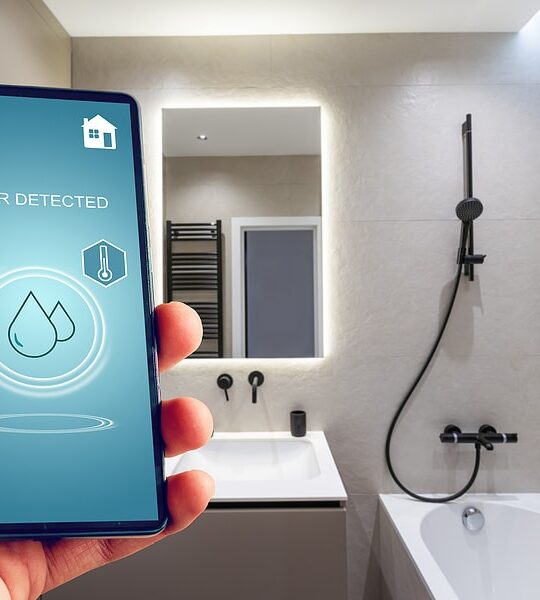Table of Contents
- 1 Understanding the Prevalence of Water Damage
- 2 The Nature and Classification of Water Damage
- 3 Initial Actions to Counteract Water Damage
- 4 The Importance of Professional Damage Assessment
- 5 Modern Techniques in Water Damage Restoration
- 6 Mitigating Secondary Damage and Mold Growth
- 7 Regional Climate and It’s Bearing on Water Damage
- 8 Demystifying the Insurance Claims Process for Water Damage
- 9 Maintaining a Defensible Home Post-Restoration
- 10 Steps to a Drier, Safer Home
 Understanding the Prevalence of Water Damage
Understanding the Prevalence of Water Damage
Water damage is one of the most common forms of property damage, and it spares no season. Whether resulting from heavy snowmelt, torrential downpours, or a simple pipe leak, the effects can be catastrophic if not handled promptly. Recognizing the potential for water damage and understanding its signs, such as sudden increases in water bills, the appearance of water spots on ceilings or walls, peeling paint, or warping floors, is vital for any homeowner. Knowledge and immediate action are imperative; they can distinguish between minor inconveniences and major renovation projects. In many cases, homeowners may find solace in turning to experienced services like professional water damage restoration in Ottawa to ensure comprehensive and proper resolution.
The Nature and Classification of Water Damage
There’s a science to water damage beyond immediate visual or structural impairments. It’s classified that reflect the water’s origin and contamination levels, ranging from clean rainwater to hazardous sewage backups. Understanding these categories is not just academic it directly influences the restoration process, guiding which materials can be salvaged and which require disposal for health and safety reasons. An invaluable resource that sheds light on the health implications of exposure to contaminants during floods is a guide from the EPA on flood cleanup. Such guidance underscores the complexity of water-related damage and the nuances of its remediation.
Initial Actions to Counteract Water Damage
The initial response to water damage detection is critical and starts with cutting off the water source or making the area safe. Quick actions like removing valuables from the area or starting the drying process are beneficial, but these measures are temporary fixes. Taking precautions against potential hazards like electrical shorts, contaminated water, or structural damage is essential. Homeowners need to act decisively, documenting the extent of the damage through photos and notes, both for personal record-keeping and as evidence for insurance claims. The homeowner’s role in early-stage response lays the groundwork for professional assessment and subsequent restoration.
The Importance of Professional Damage Assessment
Calling on professionals for water damage assessment is not just a convenience; it’s a strategic step toward recovery. These experts can rapidly determine the damage’s severity and develop a plan to return the home to safety and normalcy. Professionals can use moisture detection tools, thermal imaging cameras, and other advanced technology to identify hidden pockets of moisture that the untrained eye might miss. The accuracy of this assessment is critical, as it forms the basis for the scope of work, informing necessary repairs or replacements and ensuring that no risks are overlooked.
Modern Techniques in Water Damage Restoration
Staying up-to-date with the latest technologies and restoration techniques, restoration professionals employ various equipment and methods to effectively extract water and dry out properties. Infrared technology, for instance, allows for detecting hidden water without demolition, while high-speed air movers and dehumidifiers facilitate the evaporation and removal of moisture. Employing such methodologies minimizes the disruption to homeowners and maximizes the likelihood of salvaging structures and personal items.
Mitigating Secondary Damage and Mold Growth
The aftermath of water damage includes the risk of secondary damage, chiefly mold growth, which can lead to health issues and compromise structural integrity. Quick remediation prevents mold from establishing a foothold; however, ongoing vigilance is required to ensure environments remain inhospitable to spores. Measures like keeping humidity levels low, providing adequate ventilation, and swiftly addressing dampness are vital to maintaining a healthy home environment.
Regional Climate and It’s Bearing on Water Damage
Different regions face varying risks and types of water damage, often dictated by local climate conditions. For example, coastal properties may be subjected to storm surges and flooding, while urban areas could confront sewage backups during heavy rains. Awareness of these geographical risks can trigger preemptive actions to reinforce homes against predictable events. In this context, awareness initiatives such as the NRDC report on climate change highlight the financial and structural challenges posed by global weather shifts, emphasizing the need for tailored preventive strategies.
Demystifying the Insurance Claims Process for Water Damage
The aftermath of water damage characteristically includes navigating insurance claims, which is an intricate and bewildering process. Familiarizing oneself with the terms of one’s policy before calamity strikes, maintaining detailed records of the damage, and retaining receipts for any immediate repairs can all streamline the claims process. Succinct and clear communication with insurance representatives, supplemented by professionally documented estimates, often results in the most favorable insurance response.
Maintaining a Defensible Home Post-Restoration
Sustaining a home’s integrity after water damage necessitates consistent attention and maintenance. Homeowners are encouraged to stay ahead of repairs, monitor for new leaks, and establish seasonal checks for potential vulnerabilities. Creating a watertight home contributes to peace of mind and durability against future water-related disasters. After restoration, the emphasis inevitably shifts to prevention through behavioral changes and potential upgrades to in-home water management systems.
Steps to a Drier, Safer Home
In conclusion, while the threat of water damage is omnipresent, homeowners with the proper knowledge and resources can confidently navigate these unfortunate scenarios. Understanding the perils, pairing with reputable professionals, and practicing rigorous maintenance are the pillars of water damage preparedness and response. Furthermore, engaging experts such as those providing professional water damage restoration can be critical in effectively restoring your property and preventing future issues, making the effort well worth the investment to protect one’s home.







